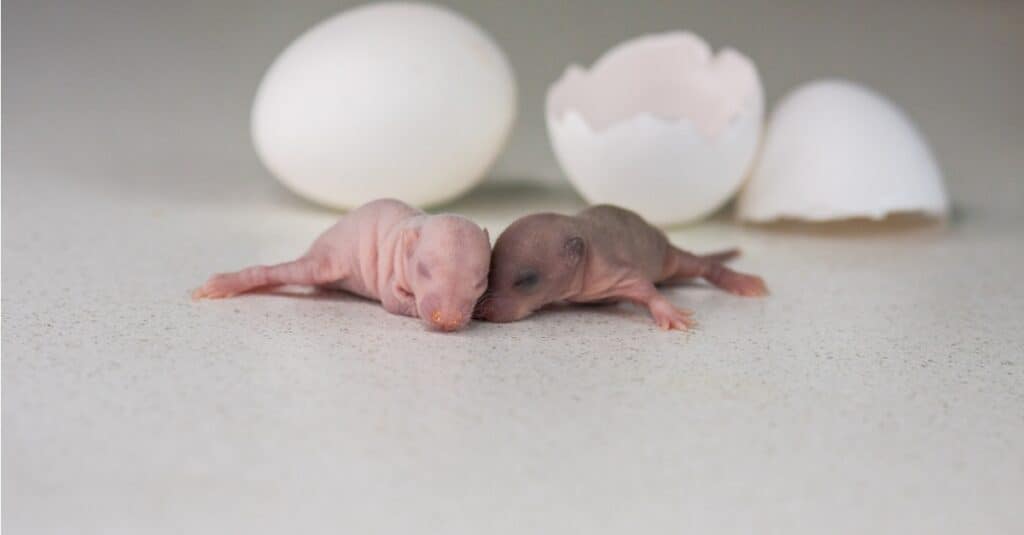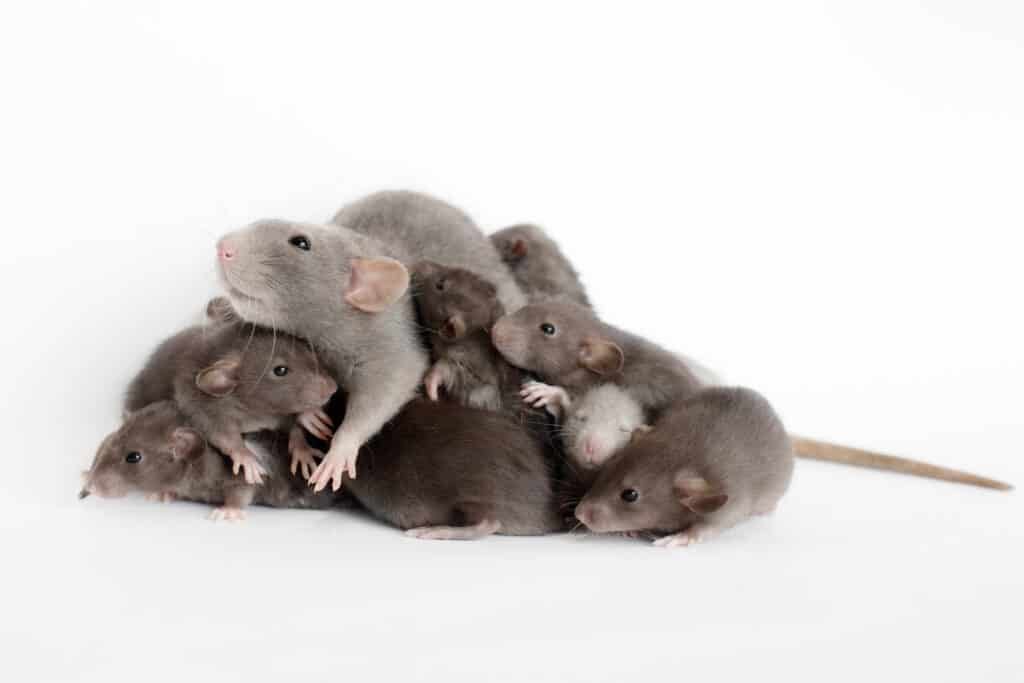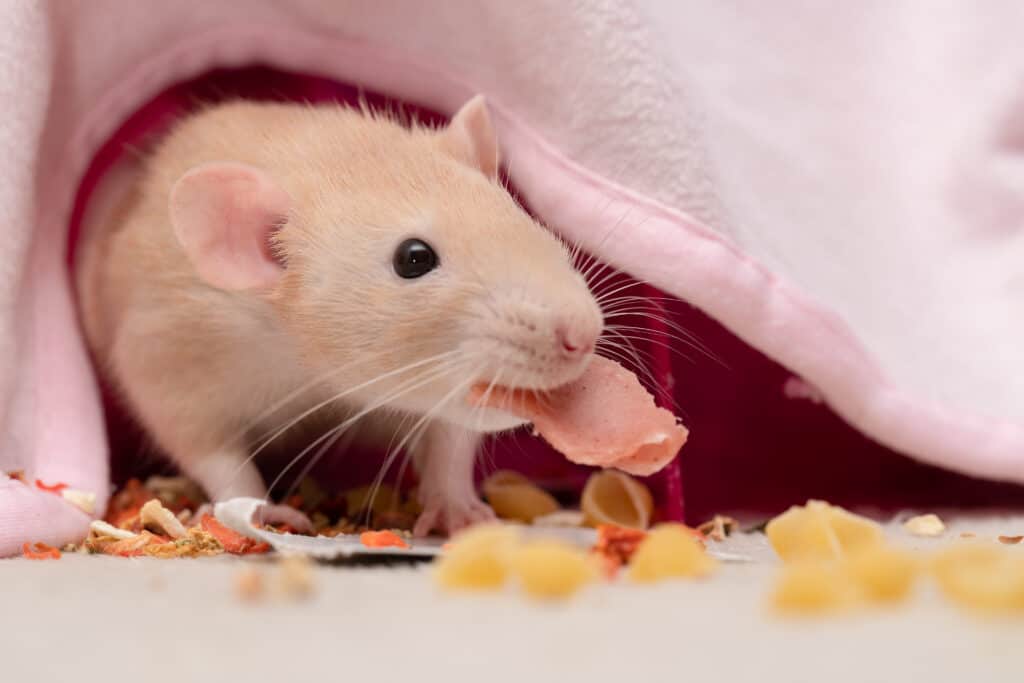Finding out the sex of a rat is essential for pet owners as they may want to form a healthy colony with the right amount of male and female rats. Rat breeders should also know how to identify the rat’s sex when purchasing these animals for breeding purposes. Luckily, sexing rats is easy, but you must do it correctly to ensure that you do not injure or distress the rat.

iStock.com/Kseniia Glazkova
How to Safely Determine a Rat’s Sex
You can determine the rat’s sex at any age. Firstly, hold your rat in the palm of your hand, so it is comfortably lying on its belly. Then gently lift its tail. Please do not lift the rat by its tail. Also, avoid pulling its tail as this may damage its tail and spine. But by gently lifting the tail, you will expose the rat’s anus.
To determine the sex of the rat, you need to look at the anogenital distance, which is the space between their anus and urethra. Male rats, known as bucks, have more distance between their anus and urethra than female rats, which are known as does. Bucks may have their scrotum visible but may also be retracted. The adult does will have mammary glands, which is an easy way to sex female rats. However, hermaphroditic rats can and do exist, but this is rare.
How To Determine if Rats Are Sexually Mature
Usually, bucks attain sexual maturity once they reach 10 to 12 weeks. Does usually reach sexual maturity when they are eight to nine weeks. Rats have a reproductive lifespan of 12 to 15 months and can produce up to five litters per year.
To determine the reproductive status of bucks, you would have to examine their testes. If their testes have descended, they will be reproductively active, but if not, they are not ready to mate. You can look for various signs to determine the reproductive status of does. If the doe has enlarged nipples, it means that she is lactating and is sexually mature, and if she has a palpating belly, she is likely pregnant. A doe will also be sexually mature if a copulatory plug is present. A copulatory plug forms due to a hardened secretion that a buck deposits into the doe’s vaginal opening after they mate.
A Rat’s Reproductive Cycle
Once the doe falls pregnant, the gestation period lasts 21 to 23 days. You can detect pregnancy at the two-week mark by feeling the abdomen. You may also notice a weight gain and enlarged mammary glands. During the gestation period, does will start making a nest, and if they are pets, you should give them the necessary materials, like cotton, tissue paper, and shredded paper, to do so.
The doe usually gives birth to a litter of eight to 18 rat pups. Rat pups are born hairless, deaf, and blind. Pet owners should keep the doe and pups in a quiet area and not disturb them for at least seven days. This quiet time is crucial, especially if the doe is a first-time mom. The doe will start weaning her pups once they reach three weeks of age. If you are a rat pet owner or breeder, note that the doe can become pregnant again fairly soon after giving birth. This situation is unhealthy, so ensure the doe has a two-month rest before mating again.
Does can produce up to 12 litters per year, but this rate will decrease as she ages. Diet, irregular light cycles, the temperature of her environment, the nesting material, and cysts on her ovaries also factor in how often she can fall pregnant. Does are known to abort, abandon, or even eat their pups if they become stressed. They will also do this if they have an inadequate diet, a lack of water, little space, have sick pups, or if the nesting material is not adequate.

Maryia Karneyenka/Shutterstock.com
The Lifespan of a Rat
The average lifespan of a rat is two years, but this depends on the species and the rat’s living circumstances. For example, wild rats usually do not live until two years old due to environmental factors and predators. However, pet rats live for up to at least two years or longer, some even reaching seven years.
To increase your pet rat’s lifespan, you must consider teeth health. Rat’s teeth do not stop growing, no matter their age, and to ensure that they are healthy, they must have opportunities to maintain their teeth properly. You can do this by giving them toys and treats to chew. For example, wooden blocks are ideal for keeping their teeth in check.

abd/Shutterstock.com
Rat Sizes
Rat sizes depend on their species and their living environments. Brown rats are one of the larger rat species, and they grow to around 16 inches in length. Brown rats usually reach a weight of 0.5 to one pound. Black rats are a bit smaller than brown rats and reach a size of 13 to 15 inches in length. These rats usually weigh between 0.3 and 0.6 pounds. Bucks are known to be larger in size and weight than does. Once fully grown, a rat’s tail is usually seven to nine inches long.
Rats who live in adequate conditions and have access to a nutrient-rich diet are known to become larger in size and especially weight if they do not exercise enough.
The post Sexing Rats: Here’s How To Do It Right appeared first on AZ Animals.
from Animal News, Facts, Rankings, and More! - AZ Animals https://ift.tt/BypmbNS